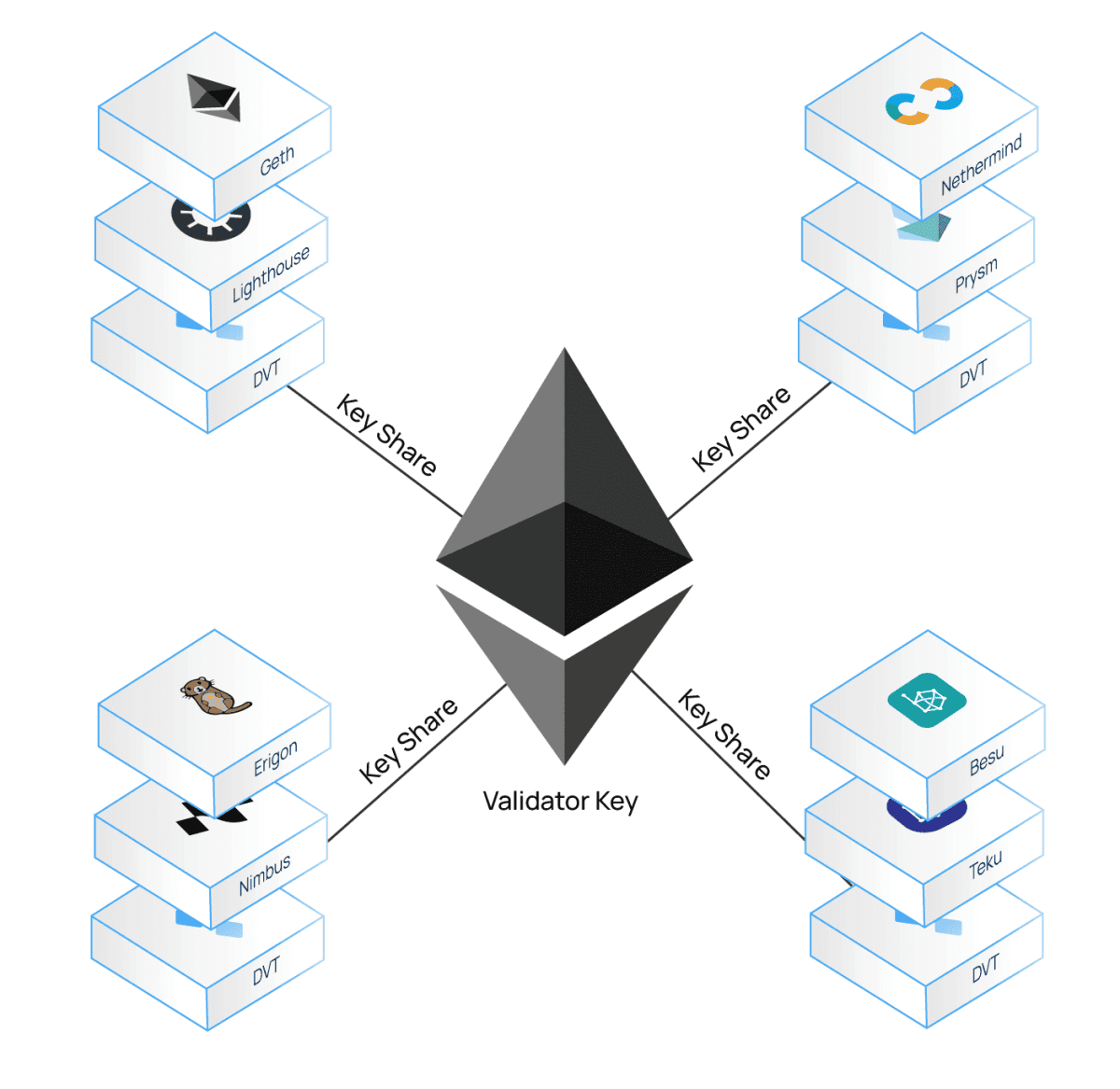What Is Distributed Validator Technology?

Distributed Validator Technology (DVT) offers a nuanced method of operating Ethereum validators, aiming to fortify security by dispersing the responsibilities associated with key management across various operators.
The foundational principle of this technology lies in the partitioning of the validator’s private key, encrypting and distributing the segments amongst participants working in tandem. In addition, they receive a unique, shared key, facilitating the generation of partial Boneh-Lynn-Shacham (BLS) confirmations. These partial confirmations are then aggregated to form a complete signature, derived from contributions made by a specific subset of operators—take, for example, three out of four. When an unsigned block is presented, the consensus mechanism randomly selects an operator to initiate the subsequent processes: accumulating confirmations, creating the signature, and eventually transmitting it to the blockchain.

DVT operational scheme. Source: сайт сообщества Ethereum.
Advantages:
1. Augmented Security: By implementing DVT, the likelihood of validator breaches and subsequent issues are significantly reduced. A malevolent entity would require control over a predominant number of operators to manipulate management and related actions.
2. Resilience: The distribution of functions amongst various participants ensures stability even in the face of software or technical issues. Additional hardware configurations can provide an enhanced level of resilience, something unachievable by a single node.
3. Decentralization: Incorporating multiple operators for block signing contributes to a reduction in network centralization, mitigating the risk of transaction blockages. This aspect becomes increasingly important as the industry observes rapid developments in liquid staking providers and the creation of numerous collaborative pools.
Drawbacks
Among the drawbacks of this technology are the increased expenses for operator support compared to a single node, and an extended delay due to a multitude of intermediate steps where issues may arise. Although the expenses decrease when employing multiple distributed validators on a single set of equipment, the delay for now solely depends on the developers' optimization efforts.
Applications
1. Independent staking: The distributed validator technology enables wealthy individuals to utilize third-party hardware and launch more nodes at lower costs. In this scenario, the key maintains full autonomy, and the number of potential penalties for inactivity is reduced.
2. Pools and Liquid Staking Protocols: Services of this kind demand reliability and stability from the selected operators since profits must be allocated to participants in a timely and rapid manner. Therefore, DVT is well-suited for this direction to prevent downtime or malicious actions.
Conclusion
Communities centered around modern decentralized systems should always aspire to establish a reliable and distributed framework where validators are equal participants in the process, rather than privileged users with the authority to censor transactions. The distributed validator technology fosters this endeavor, also reducing the number of software and technical errors, enhancing the decentralization and scalability of the network.

